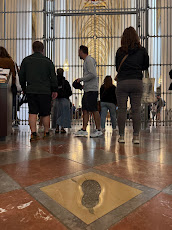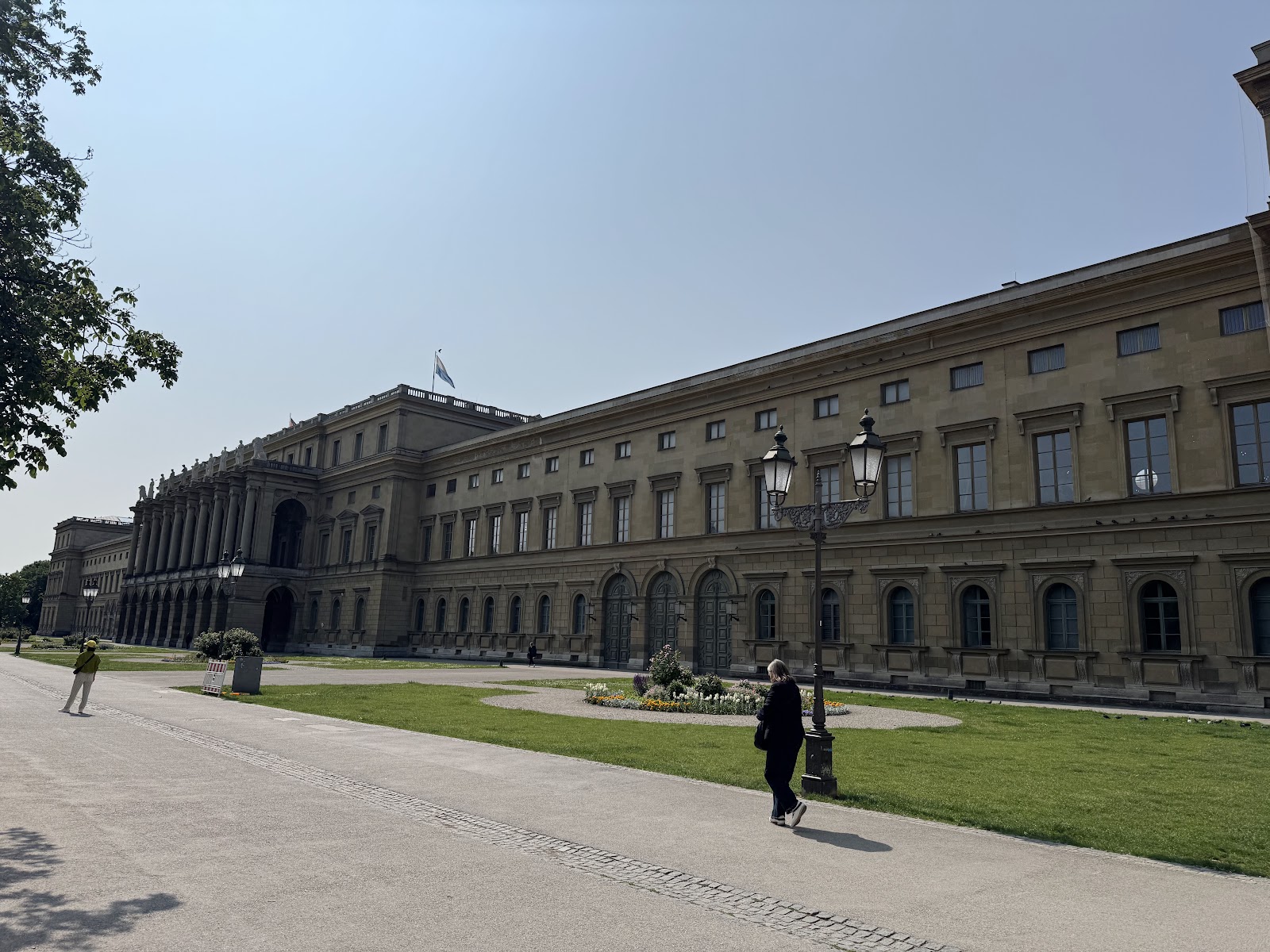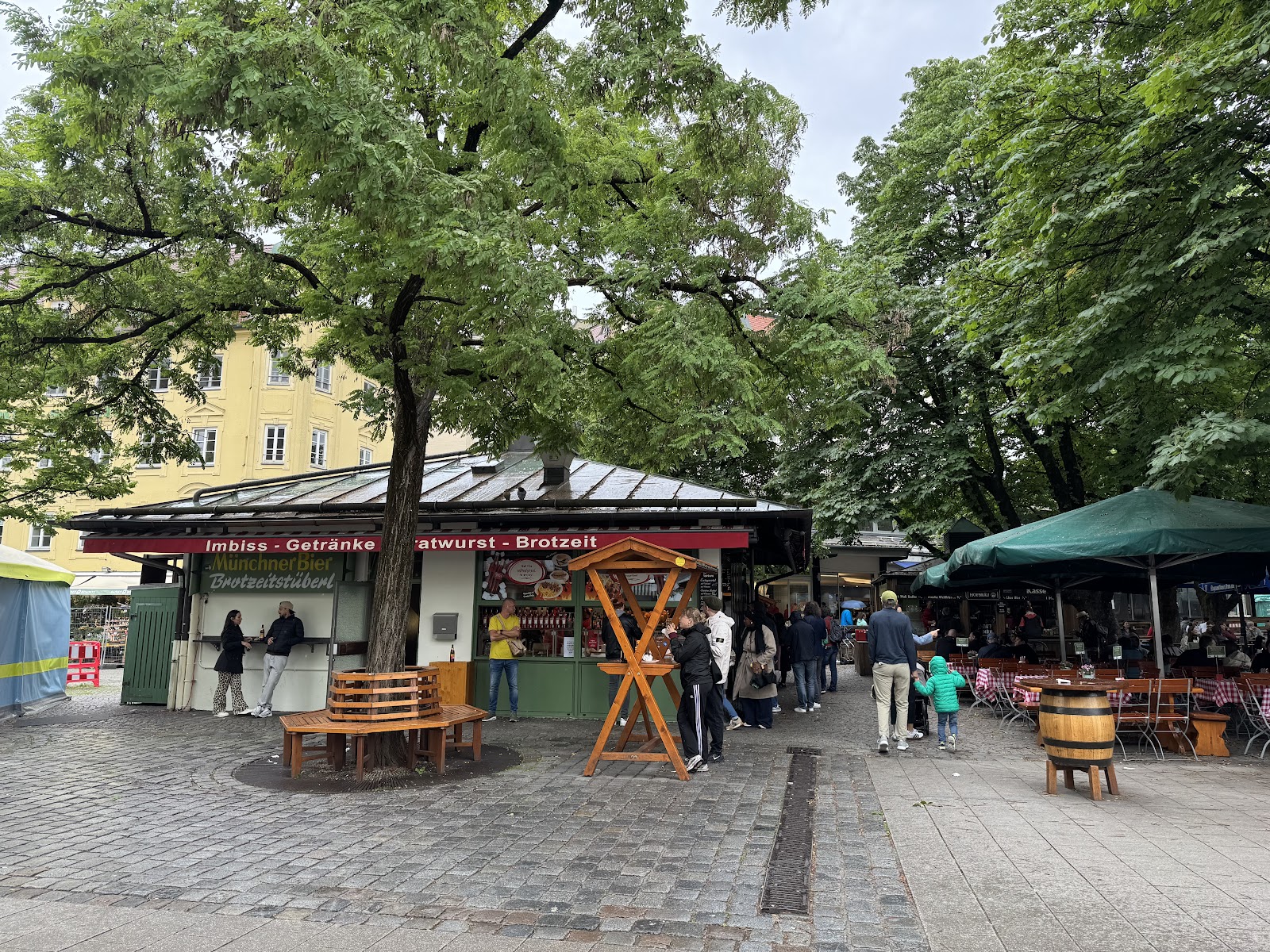SUNDAY, June 8 – Munich
We arrived in Munich after a long day of travel, exhausted but excited. Lane, Doug, Hayden and I flew together from Atlanta and were so grateful to see the friendly face of Philipp waiting for us in the arrival hall to take us into town. We got breakfast at the hotel, then slowly met up with half of the group who had arrived before us as we all waited around for our rooms to be ready. After a quick power nap and shower, we headed out for a walking tour of the center of Munich.
In my first exposure to German efficiency, we were each given our own transportation pass, the Deutschland Ticket, that was easily added into our electronic wallet - good on all public transportation throughout the entire country for the rest of the month (!). So easy – thanks Franka and Philipp!
We took the subway from the hotel to the Marienplatz station to see the old and new Town Hall, and the supposed geographic center of Munich since 1158. Unbeknownst to us, that night was the championship football game between Spain and Portugal for the Nations League title. Although the game itself was being held at the FC Bayern Munich stadium about an hour away, there were hundreds of people pre-partying around Marienplatz, making for a loud and lively welcome!
To get away from the noise, we walked around the corner to the Viktualienmarkt, the food square, to see our first real Bavarian biergarten - different from those in Berlin because you can bring in your own food. Biergartens are sometimes owned by specific beer companies, but this one was owned by the state – so under us was a giant beer reservoir that alternated among the five big beermakers from the area. In addition to beer, Bavaria is also known for its soft pretzels and sausages (wurst) and meat products.
Given its world-renowned beer culture, it was surprising to hear that Munich was founded not because of beer, but because of “White Gold” - salt. Salt was such an important commodity during the Middle Ages since it was crucial to food preservation (seeing as there was no refrigeration). Munich originally sat along the Salt Road that brought this important commodity from the mines in Austria across Europe. A bridge over the river Isar passed by a settlement of Benedictine Monks, but Duke Henry of Bavaria wanted to force traders to use (and pay for the crossing of) his own bridge. The bishop wasn’t too thrilled, so eventually a written agreement was drafted by Emperor Fredrick I Barbarosa in 1158 - it was the first document that mentions the city of Munich.
 |
| Frauenkirche |
 |
| The Devil's footprint |
Legend has it the architect made a deal with the devil to help finish the building. The devil’s stipulation was that the Cathedral was to have no windows, knowing a windowless cathedral would not be appealing so nobody would go to church. But the architect was clever and built it in a way that pillars blocked the sightline from the entry to all the windows, and when the devil found out he got so angry he stomped his foot in the entry foyer – and the footprint can still be seen to this day.
The end of our walking tour brought us back to Marienplatz where we watched the figures on the new Town Hall building during the five o’clock glockenspiel carillon show. The moving figures show two historical events – on the upper level is the 1568 wedding of Duke Wilhelm V to Renate of Lorraine, with the associated jousting tournament. Under that, the Schaffler dance shows beermakers dancing to celebrate the end of the plague.
We then took the subway to dinner at Augustiner Keller Bier Haus - Augustiner Bräu is the oldest (1328) independent brewery in Munich. We ate inside the restaurant since it was slightly drizzly; I shared several plates with Adrien and Lane (via recommendations from Franka).
 |
| Bavarian pretzels are SO good! |
MONDAY, June 9 – Munich
This morning, after a hearty breakfast (that included the traditional weißwurst and Bavarian pretzel - and yes, I did take one extra for the road... a pretzel, not a sausage!), we headed out for a tour focusing on "National Socialism and Resistance" in Munich. Munich is known as the birthplace of the Nazi Party and where Adolf Hitler rose to power, and throughout the city there are stark reminders of this troubled past.
* * * * * * * * * * * * * * * * * * * * * * * * * * * *
A Brief History Break – The rise of the Nazi Party
The NSDAP (National Socialist German Workers' Party), otherwise known as the Nazi Party, emerged as a consequence of the economic hardships faced by the people of Germany in the aftermath of WWI. The harsh terms of the Treaty of Versailles resulted in high unemployment and poverty throughout the country, which the Nazis blamed on Jews, communists, and the Weimar Republic.
The charismatic Adolf Hitler convinced many Germans that he and the Nazi Party could bring back jobs, rebuild the economy, and restore national pride. After becoming Chancellor in 1933, Hitler quickly turned Germany into a dictatorship that used propaganda and violence to silence opposition and maintain strict control. The Nazis banned all other political parties and controlled the media. Their dangerous policies eventually led to World War II and the holocaust.
* * * * * * * * * * * * * * * * * * * * * * * * * * * *
Munich doesn't try to hide its dark history - instead, it embraces and celebrates that fact that the people suffered through this bleak period of time and overcame it to become a thriving, welcoming city. All throughout our tour we saw not just remnants of Nazi power and influence, but we also found memorials and tributes to resistance. Many of these acts were from small groups and individuals.
 |
| Memorial to the White Rose |
On the brick wall of the University building just around the corner, bullet holes are still visible from the war. More than half of Munich was destroyed during WWII yet many of the key Nazi buildings are still standing. It was fascinating to see these reminders of the violence and destruction of war, yet every day the people on Munich walk past, some oblivious to this piece of history.
 |
| The Residenz |
 |
| Feldherrnhalle |
 |
| Theatine Church, Odeonsplatz. Feldherrnhalle is to the far left, covered in scaffolding |
 |
| The Viscardigasse installation "Arguments" |
 |
| The Eternal Flame |
After lunch, we headed to the Dachau Concentration Camp.
The grounds of this memorial are hauntingly lovely – you walk in along a treelined path; the birds were singing and it was a beautiful, blue-sky day. Outside the wall, a half-excavated railway line emerges from a grassy path running from the former SS camp directly to the gates of the Dachau Concentration Camp.
A wrought iron gate adorned with the words Arbeit Macht Frei greet you as you enter: Work will set you free.
As the first Nazi concentration camp, Dachau was originally built in 1933 to house political prisoners. Later, many other camps modeled themselves after Dachau, which eventually held thousands of prisoners who were forced into labor, experimented on, and often killed. In bunks that were meant to house 200 prisoners, up to 2,000 were crammed in - during its operations from 1933 until liberation in 1945, over 200,000 people from 30 countries were imprisoned.
Visiting Dachau elicits so many…feelings. Even setting foot on the grounds of Dachau was hard – there is a palpable weight hanging in the air, and for the most part the visitors were respectful of the legacy of those who suffered there. It is such an important part of history and is a necessary reminder of what happens when we lose compassion, empathy, and respect for humanity and instead allow fear, greed, hatred, and complacency to dictate our actions.














No comments:
Post a Comment